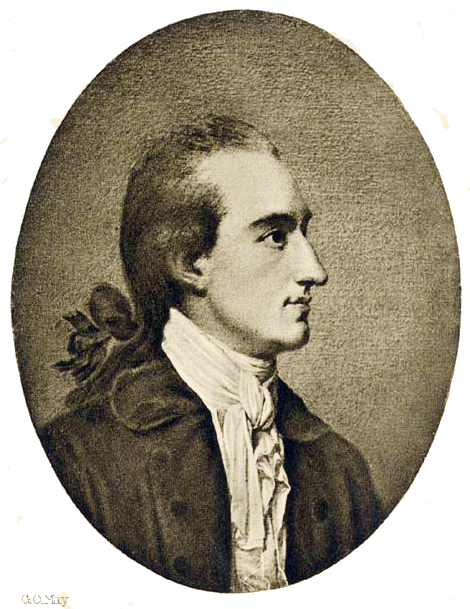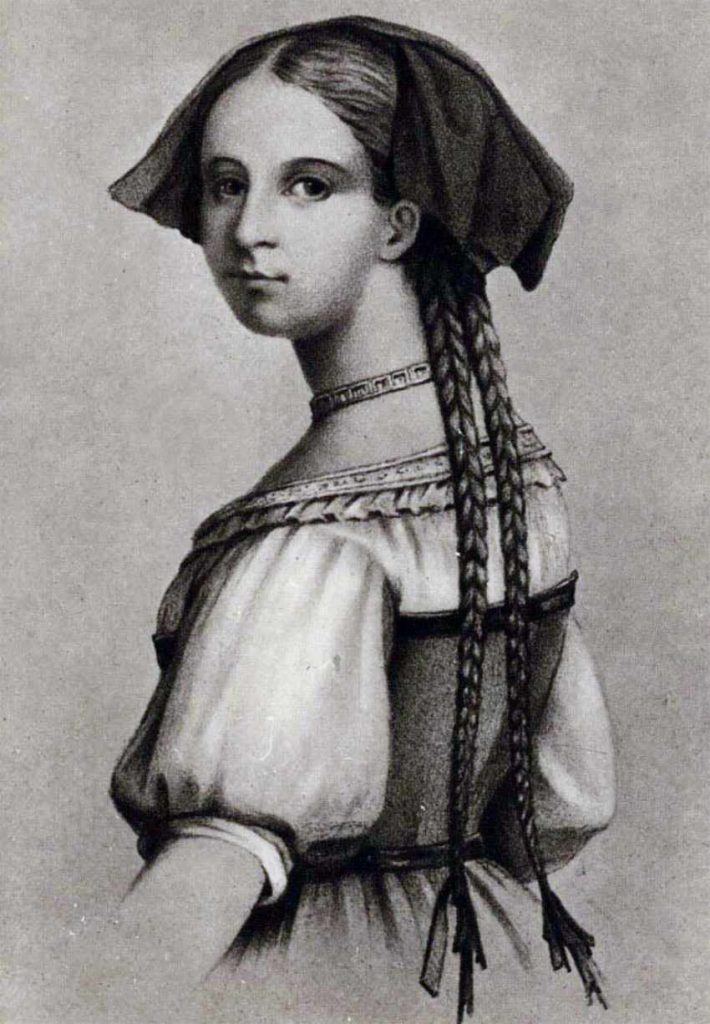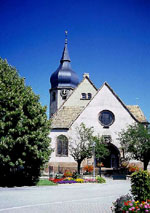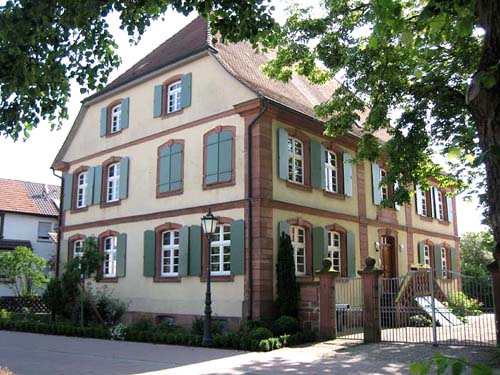Presumably on April 19, 1752, Friederike was born as the third of five children to the married couple Johann Jakob and Maria Magdalena Brion, née Schöll. During the French Revolution, the parish registers were destroyed, which is why the date of birth is not considered certain. In 1760, father Johann Jakob accepted a job as a village pastor in Sessenheim. The rectory was also visited in 1770 by the Strasbourg law student Johann Wolfgang Goethe from Frankfurt. Goethe studied in Strasbourg. This visit ended in one of the most famous love episodes in history.

Goethe was fascinated by the sight of the young woman and wrote: “At that moment she really stepped in the door; and then a very dearest star rose in this rural sky. ”And further:“ Slender and light, as if she had nothing to wear, she walked, and the neck almost seemed too delicate for the huge blond braids of the cute little head . With cheerful blue eyes she looked around very clearly, and the well-behaved snub nose searched the air so freely as if there could be no worry in the world; the straw hat was hanging on my arm, and so I had the pleasure of seeing and recognizing her at first glance in all her grace and loveliness. “
From then on, Goethe visited Sessenheim several times. Well inspired by his feelings, Goethe found his way back to poems and songs, which he also addressed to Friederike Brion.
The love affair, however, did not last long. Already in the early summer of 1771, Goethe, who compared his restless soul to the “weather cock over there on the church tower”, thought of ending the relationship. On August 7, 1771 he saw Friederike for the last time before returning to Frankfurt: “When I took her hand from the horse, tears stood in her eyes and I felt very nauseous.” Left the “wonderful Alsace” he a week later. It was only from Frankfurt that he wrote a letter to Friederike that finally resolved the relationship. Friederike’s answer “tore my heart in tears … I always felt that I missed it, and worst of all, I could not forgive myself for my own misfortune. Here I was guilty for the first time; but the farewell was final. “
However, Friederike Brion remained unmarried until the end of her life and lived in her parents’ house until her father’s death in 1787; the mother had died a year earlier. Then Friederike moved with her younger sister Sofie to live with her brother Christian in the parish of Rothau in the Steintal. The two stayed there even after his transfer.
In 1801, Friederike moved to the rectory in Diersburg to support her ailing sister. Friederike followed the family to Meißenheim in Baden in 1805. In 1807 the sister died. Friederike stayed with her brother-in-law. She wasn’t in the best of health either. At the beginning of 1813 she had to ask her sister Sofie to take care of her. She died on April 3, 1813 and was buried on April 5 in the cemetery of the Meißenheim church.
On April 3rd, 2013 Meißenheim celebrated the 200th anniversary of the death of the famous citizen.

The tombstone, made by the sculptor Wilhelm Hornberger, was not erected until 1866 on the then completely neglected grave site. On August 19 of that year, Friedrich Gessler gave the dedication speech there. The inscription reads, after a verse by Ludwig Eckardt: “A ray of the poet’s sun fell on her, so rich that it gave her immortality!”
The most interesting and attractive center of the Rieddorf Meißenheim is the “Friederike Brion grave” at the back of the Protestant baroque church. The pastor’s daughter Friederike Brion, who comes from the Alsatian Sessenheim, was not only “the helpful aunt”, as she was of the residents of the village was called, but also Goethe’s childhood love, which found its final resting place here in 1813.

Although Friederike Brion did not come to Meißenheim “after her time with Goethe” from the Alsatian Sessenheim in 1805, this liaison, documented by numerous poems by Johann Wolfgang von Goethe from his time in Strasbourg, also made it known to the right of the Rhine.
(Left picture: Evangelical Church Sessenheim)
Friederike Brion never married and moved from the parsonage in Sessenheim to her sister Salomea in the stately parsonage in Meißenheim to help the sister who was married to the Meißenheim pastor.
In the Meißenheim years she put Christian teaching into practice with kindness and charity. She only stayed in her second home in the Ried for a short time, as she followed her sister, who died in 1807, in 1813. The beautifully decorated grave behind the Meißenheim church is a reminder of her time in Meißenheim to this day.

Meißenheim rectory, Friederike Brion’s death room, first and second window facing the street.